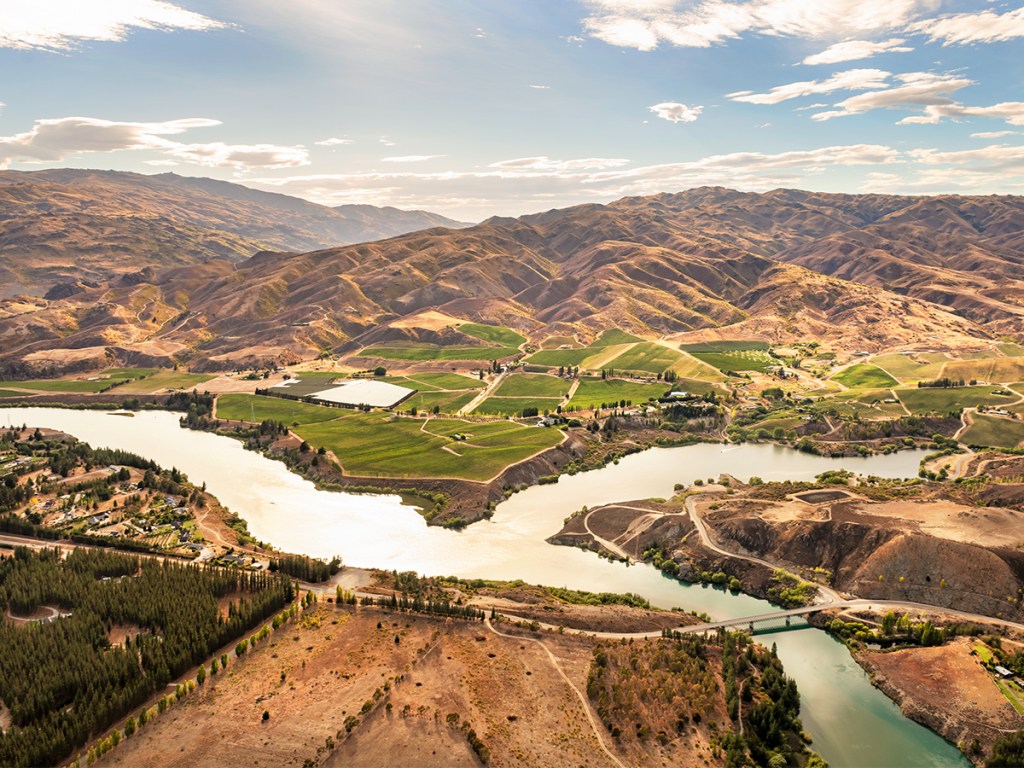Growing conditions and soil quality in Bannockburn, a 350 hectare area of Central Otago, have been identified by a French winemaker as uniquely positioned to help address a global shortage of super-premium wine.
Baroness Ariane de Rothschild, CEO of Edmond de Rothschild Group, who is in New Zealand to oversee the establishment of the company’s first organic wine production facility, Akarua, says they also want to learn from and work collaboratively with other winemakers in the region to raise the international profile of Bannockburn.
Madame de Rothschild says while they were first attracted to Central Otago for its exceptional terroir, there is growing recognition that the region has a key role to play in helping to meet global demand in the premium wine segment.
“We know the global market for Pinot Noir is growing rapidly and Akarua is a key strategic vineyard for Edmond de Rothschild Heritage to expand this part of our collection.
“Working with other growers in the region as a collective we can develop the international reputation of Bannockburn more effectively.
“Our existing distribution channels in 80 countries include some of New Zealand’s non-core wine markets such as Japan, South Korea, France, Switzerland, South Africa, Argentina and United Arab Emirates provide us with an opportunity to introduce Bannockburn wines to new audiences in premium hospitality venues around the world,” she says.
Boris Breau, Bordeaux-based managing director of Edmond de Rothschild Heritage Wines, says the soil and climatic growing conditions in Bannockburn are on par with the world’s best for Pinot Noir, and New Zealand’s biosecurity controls have insulated it from many of the diseases and insects which have constrained wine production around the world.
He says with key wine producing regions around the world unable to meet global demand, prices for premium Pinot Noir have increased significantly.
“Pinot Noir is an extremely sensitive grape and there are only a few parts of the world which possess the climate variation and inclination of slopes relative to the sun – as well as the requisite terroir (soil quality and growing conditions).
“New Zealand however has a distinct advantage in that its border controls have successfully prevented the introduction of a number of invasive insect species and diseases – which have devastated wine growing regions around the world.
“This country is one of the few remaining wine growing countries in the world where the grape phylloxera, an aphid-like pest, has not decimated vines to the point where they are all grown from grafts.
“Internationally species like this have become so pervasive that some countries are now decreasing the planting of vines and moving to alternative fruit crops.
“While still a relatively new producer of Pinot Noir, we believe Bannockburn’s exceptional terroir rivals the world’s top wine regions for producing this varietal and there is significant export opportunity for wines from this area within the super-premium segment,” he says.
Breau says Bannockburn is the country’s latest wine producing region to be registered as a wine geographical indication (GI) – an important step in raising its global profile and the protection of its brand.
A geographical indication is a sign used on wines and spirits from a specific geographical location which possesses a quality, reputation or other characteristics linked to that location.
Anne Escalle, Akarua General Manager, says cooperation in other wine making regions they operate in has also seen the introduction of innovative new technologies to protect their crops.
“Internationally the collaboration between growers in a geographic indication extends beyond the marketing of a regional brand and can also cover the exchange of knowledge, research and development and best practice among local winemakers.
“This model can see the sharing of resources and adoption of new technologies to protect vines – such as helium balloons which carry a payload of hygroscopic salt and are coupled with a storm cell detection radar to detect weather events that may threaten the region.
“Coordination across a geographical indication can see the centralised control of this technology which can be launched into the atmosphere using a mobile device to mitigate the impact of hail,” she says.
Did you know?
There are six ways you can catch up with The Shout NZ?
Our print magazine – new issue out now! Subscribe here.
Online, updated daily with its own unique content and breaking news.
Our weekly newsletter – free to your inbox! Subscribe here.
Our digital magazines – the latest issues are online now.
We are also on Facebook and Instagram!





